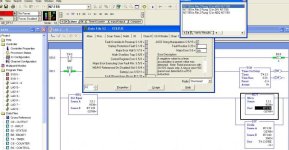o all, I have a SLC 5/04 1747-L543 that faulted out twice this week. Attached is the reason for the fault.
Analog input for I:2.1 is a 10 K pot that adjusts a delayer for triggering a cycle.
Rung 11 is the timer with the preset of -11.
Rung 12 I:2.1 is the actual input from the potentiometer.
Question, how did N7:159 end up with -32768. I don’t see anything else writing to its value.
Any help greatly appreciated.

Analog input for I:2.1 is a 10 K pot that adjusts a delayer for triggering a cycle.
Rung 11 is the timer with the preset of -11.
Rung 12 I:2.1 is the actual input from the potentiometer.
Question, how did N7:159 end up with -32768. I don’t see anything else writing to its value.
Any help greatly appreciated.



